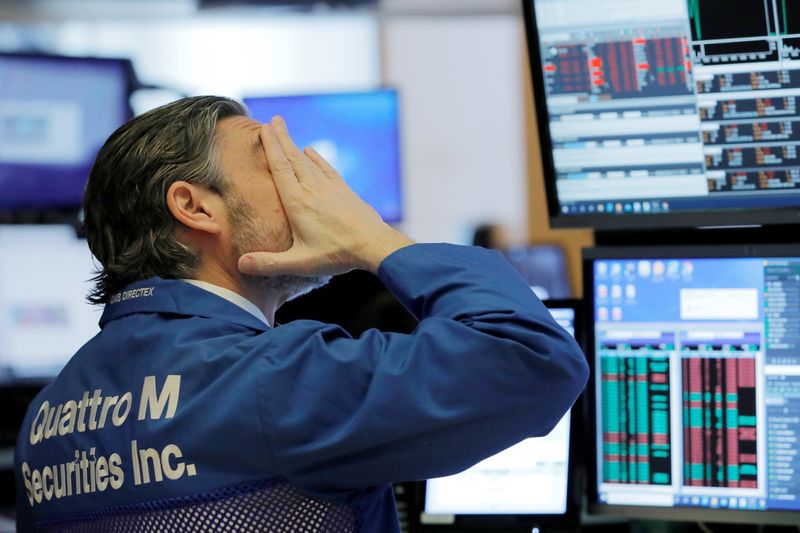This post was originally published on this site
https://i-invdn-com.akamaized.net/trkd-images/LYNXMPEG2418I_L.jpg © Reuters. a trader works on the trading floor at the New York Stock Exchange (NYSE) in New York City
© Reuters. a trader works on the trading floor at the New York Stock Exchange (NYSE) in New York CityBy Medha Singh and Sanjana Shivdas
(Reuters) – U.S. stock indexes dropped more than 2% on Thursday as the swift spread of the coronavirus in the United States led California to declare an emergency, while airline stocks were hammered by crippled travel demand.
Down almost 12% last week – its worst since the 2008 financial crisis – the had recovered some poise as Joe Biden’s surge in the Democratic primaries distracted traders from the widening impact of the virus.
The benchmark index, however, is still about 7.5% below its record close on Feb. 19 and fears about the economic fallout remain at the forefront of investors’ minds.
The U.S. death toll from the outbreak rose to 11 on Thursday and California reported the first fatality outside Washington state, a day after lawmakers approved an $8.3 billion bill to combat the outbreak.
The , Wall Street’s fear gauge, jumped 4.61 points to 36.63.
“Volatility is the norm right now as we ascertain how much economic damage is going to be done in the wake of the coronavirus epidemic,” said Art Hogan, chief market strategist at National Securities in New York.
U.S. airline Southwest slipped 4.3% after issuing a revenue warning as the outbreak crushes passenger numbers, while United Airlines and JetBlue Airways cut flights and implemented cost controls.
The International Air Transport Association also flagged a potential $113 billion hit to global airline revenue, sending the S&P 1500 airlines index down down 5.7%.
Cruise operators Carnival (NYSE:) Corp, Royal Caribbean Cruises and Norwegian Cruise Line Holdings sunk between 7.9% and 10.6% as health officials screened people on a cruise line linked to the death in California.
At 9:48 a.m. ET, the was down 710.78 points, or 2.62%, at 26,380.08 and the S&P 500 was down 76.15 points, or 2.43%, at 3,053.97. The was down 191.55 points, or 2.12%, at 8,826.54.
All of the major S&P sectors were in the red with technology stocks weighing the most on the benchmark index.
The rate-sensitive bank sub-sector dropped 4.6%, while the broader financial sector slipped 3.7%. [US/]
Traders are betting on more monetary easing after an emergency interest rate cut by the Federal Reserve earlier this week, further pressuring U.S. Treasury yields. [US/]
HP Inc (NYSE:) dipped 0.6% as the personal computer maker rejected a raised takeover bid of about $35 billion from Xerox (NYSE:) Holdings Corp.
Declining issues outnumbered advancers for a 9.21-to-1 ratio on the NYSE and a 4.84-to-1 ratio on the Nasdaq.
The S&P index recorded four new 52-week highs and 39 new lows, while the Nasdaq recorded six new highs and 105 new lows.
Fusion Media or anyone involved with Fusion Media will not accept any liability for loss or damage as a result of reliance on the information including data, quotes, charts and buy/sell signals contained within this website. Please be fully informed regarding the risks and costs associated with trading the financial markets, it is one of the riskiest investment forms possible.

